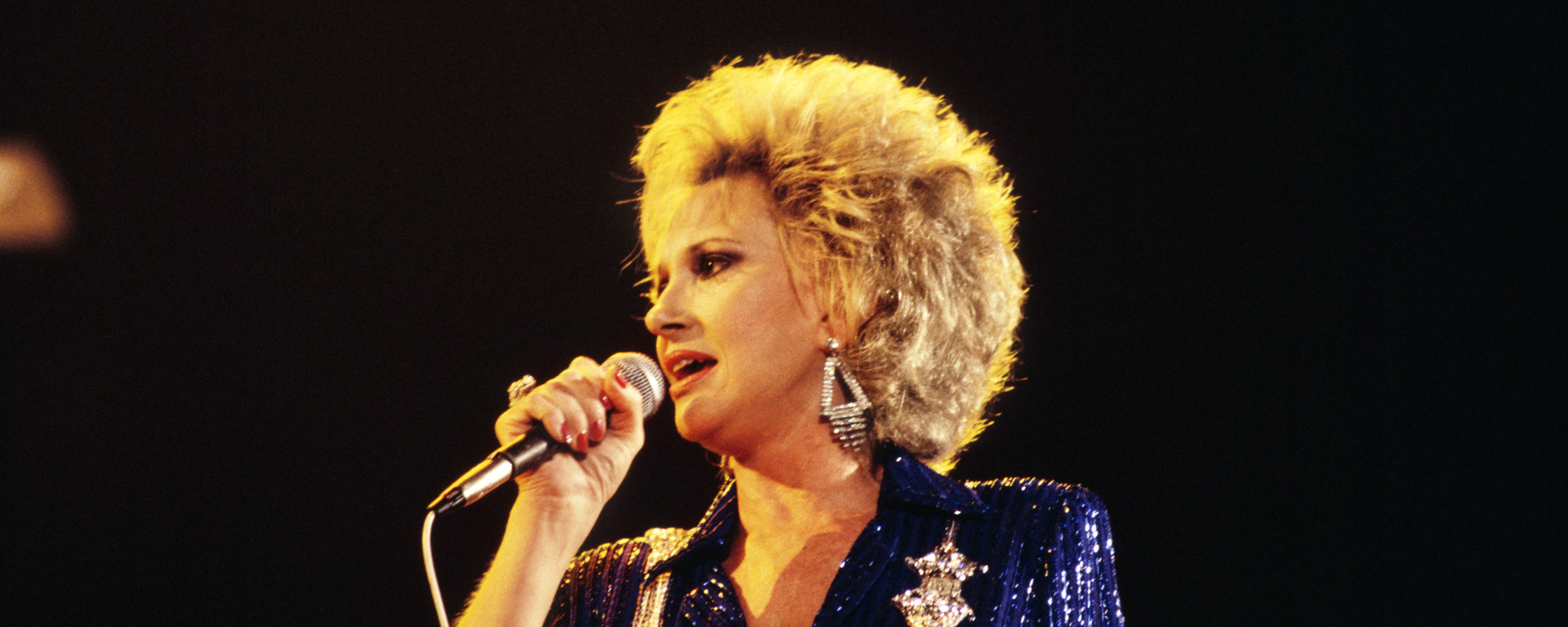Before we had Gwen Stefani teaching us how to spell “b-a-n-a-n-a-s” in “Hollaback Girl,” there was Tammy Wynette spelling out the pains of “D-I-V-O-R-C-E.” Though she didn’t write it, Wynette lived the lyrics of “D-I-V-O-R-C-E,” having been married several times, most famously to George Jones for six years, along with four other men before her death in 1998. Co-written by Bobby Braddock and Curly Putman, the song had a few stops and starts before it became the country classic it is today. Below, we explore the history behind Wynette’s “D-I-V-O-R-C-E.”
Videos by American Songwriter
Behind the Meaning
Released in 1968, the song is a clever take on a trick used by parents to spell out a word they don’t want their kids to hear, literally saying in the lyrics we spell out the words we don’t want him to understand. The song follows a set of parents as they have to break the news to their four-year-old son that their marriage is ending, spelling out the name of their son “J-O-E” along with “C-U-S-T-O-D-Y.” It’s a forlorn song, one that Braddock had a hard time selling at first.
Prior to “D-I-V-O-R-C-E,” Braddock had written a song called “I L-O-V-E Y-O-U (Do I Have to Spell It Out for You)” that didn’t take off. “I just didn’t really like the way it was headed,” Braddock recalls to the Tennessean about the song that he later finished and was also cut by Wynette. “But I liked the idea, and that gave me the idea of parents spelling out the word that they didn’t want their kid to hear, about the divorce they’re about to go through.”
Our D-I-V-O-R-C-E becomes final today
Me and little J-O-E will be goin’ away
I love you both and this will be pure H-E double L for me
Oh, I wish that we could stop this D-I-V-O-R-C-E
Braddock originally wrote the song solo and then pitched it to co-writer and song plugger for Tree Publishing Company, Curly Putman. He recalls how Putman liked the song and they cut a demo, but it lay dormant for a while. “I couldn’t understand it, it had been around for several months,” Braddock recalls in a video interview. When he asked Putman why he thought no one had cut the song, he replied that the “melody is too happy for such a sad song,” recommending they change part of the melody in the last line of the chorus and the verse. “It dawned on me that it sounded very much like a soap commercial,” Braddock reflects, praising Putman’s “lonesome-sounding voice” that took the song’s meaning to a new level. After Putman’s chord change and voice injected some “mournfulness into it,” they recorded a new demo that grabbed the ears of Wynette’s producer, Billy Sherrill, who cut it with her “immediately.” “The moment he heard it he said that he knew it was a hit,” Braddock recalls of Sherrill’s reaction.
The Result
It didn’t take long for “D-I-V-O-R-C-E” to resonate with audiences, Wynette releasing it as the lead single off her 1968 album of the same name. It reached No. 1 on the Billboard Hot Country Songs chart that same year and was her fourth hit. It’s since become a signature piece in Wynette’s catalog. Dolly Parton, Rosanne Cash, and Dottie West are among the other country women who have recorded cover versions of “D-I-V-O-R-C-E.”
In The Smithsonian Collection of Classic Country Music, historian Bill Malone acknowledged how Wynette spoke to all divorced women through this song, writing “[she] encompassed the jagged reality so many women have faced” and that her delivery of the song is “painfully sincere—there is no irony here—and if there is a soap opera quality to the dialogue, the content well mirrors both her own life and contemporary experience.”
Photo by Al Clayton/Getty Images











Leave a Reply
Only members can comment. Become a member. Already a member? Log in.